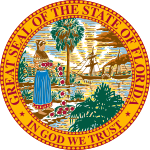
Claude Denson Pepper was an American politician of the Democratic Party. He represented Florida in the United States Senate from 1936 to 1951, and the Miami area in the United States House of Representatives from 1963 until 1989. He was considered a spokesman for left-liberalism and the elderly.

The 1988 United States Senate elections were elections for the United States Senate. Held on November 8, 1988, the 33 seats of Class 1 were contested in regular elections. In spite of the Republican victory by George H. W. Bush in the presidential election, the Democrats gained a net of 1 seat in the Senate. 7 seats changed parties, with 4 incumbents being defeated. The Democratic majority in the Senate increased by one to 55–45.
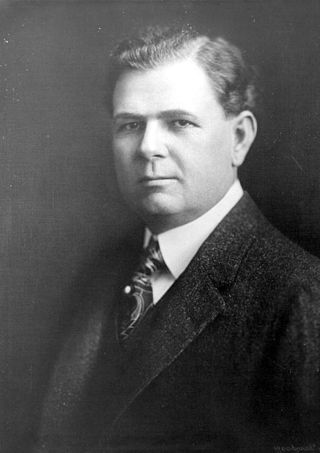
Park Monroe Trammell, was an American attorney and politician from the state of Florida. Trammell represented Florida in the United States Senate from 1917 until his death in 1936. As chair of the Senate Naval Affairs Committee, Trammell was essential in the creation of several laws that revitalized the United States Navy. Trammell previously served as the Governor of Florida and Florida Attorney General.

John Wellborn Martin was an American politician who served as the 24th Governor of Florida, from 1925 to 1929. He also served as Mayor of Jacksonville, Florida, from 1917 to 1923. Born in Plainfield in Marion County, Florida, Martin and his family moved to Jacksonville in 1899. Despite only about four years of formal education, he studied law and was admitted to the Florida Bar in 1914. Three years later, Martin ran for Mayor of Jacksonville and easily defeated incumbent J. E. T. Bowden, becoming the city's youngest mayor at age 32. He was easily re-elected twice in landslide victories and served three consecutive terms.

The 1970 United States Senate elections was an election for the United States Senate. It took place on November 3, with the 33 seats of Class 1 contested in regular elections. Special elections were also held to fill vacancies. These races occurred in the middle of Richard Nixon's first term as president. The Democrats lost a net of three seats, while the Republicans and the Conservative Party of New York picked up one net seat each, and former Democrat Harry F. Byrd Jr. was re-elected as an independent.

The 1968 United States Senate elections were elections for the United States Senate. Held on November 5, the 34 seats of Class 3 were contested in regular elections. They coincided with the presidential election of the same year. The Republicans picked up five net seats in the Senate. This saw Republicans win a Senate seat in Florida for the first time since Reconstruction.

The 1964 United States Senate elections were held on November 3. The 33 seats of Class 1 were contested in regular elections. Special elections were also held to fill vacancies. They coincided with the election of President Lyndon B. Johnson by an overwhelming majority, to a full term. His Democratic Party picked up a net two seats from the Republicans. As of 2023, this was the last time either party has had a two-thirds majority in the Senate, which allowed the Senate Democrats to override a veto, propose constitutional amendments, or convict and expel certain officials without any votes from Senate Republicans. However, internal divisions would have prevented the Democrats from having done so. The Senate election cycle coincided with Democratic gains in the House in the same year.

The 1958 United States Senate elections were elections for the United States Senate which occurred in the middle of President Dwight D. Eisenhower's second term. Thirty-two seats of Class 1 were contested in regular elections, the new state of Alaska held its first Senate elections for its Class 2 and 3 seats, and two special elections were held to fill vacancies.

The 1950 United States Senate elections occurred in the middle of Harry S. Truman's second term as president. The 32 seats of Class 3 were contested in regular elections, and four special elections were held to fill vacancies. As with most 20th-century second-term midterms, the party not holding the presidency made significant gains. The Republican opposition made a net gain of five seats, taking advantage of the Democratic administration's declining popularity during the Cold War and the aftermath of the Recession of 1949. The Democrats held a narrow 49-to-47-seat majority after the election. This was the first time since 1932 that the Senate majority leader lost his seat, and the only instance of the majority leader losing his seat while his party retained the majority.

The 1936 United States Senate elections coincided with the reelection of President Franklin D. Roosevelt. The 32 seats of Class 2 were contested in regular elections, and special elections were held to fill vacancies. The Great Depression continued and voters backed progressive candidates favoring Roosevelt's New Deal in races across the country. The Democrats gained 5 net seats during the election, and in combination with Democratic and Farmer–Labor interim appointments and the defection of George W. Norris from the Republican Party to become independent, the Republicans were reduced to 16 seats. Democrats gained a further two seats due to mid-term vacancies. The Democrats' 77 seats and their 62-seat majority remain their largest in history.
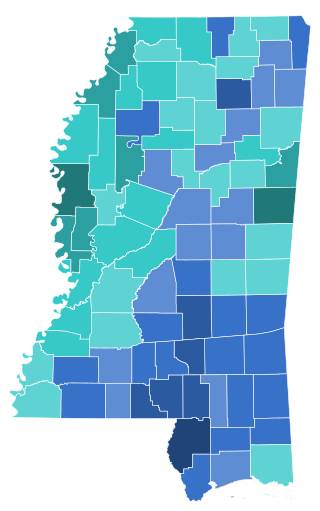
The 1934 United States Senate election in Mississippi was held on November 6, 1934. Incumbent Senator Hubert Stephens ran for re-election to a third term, but was defeated by Governor Theodore Bilbo in a close run-off election.

The 1950 United States Senate election in Florida was held on November 7, 1950. Incumbent Senator Claude Pepper ran for a third full term in office but was defeated in the Democratic primary by U.S. Representative George Smathers, who went on to easily win the general election.

The 1958 United States Senate election in Florida was held on November 4, 1958.
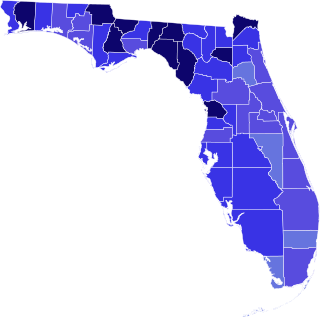
The 1916 United States Senate election in Florida was held on November 7, 1916.

The 1922 United States Senate election in Florida was held on November 7, 1922.

The 1928 United States Senate election in Florida was held on November 6, 1928.

The 1940 United States Senate election in Florida was held on November 5, 1940.
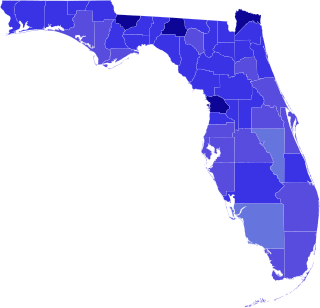
The 1912 Florida gubernatorial election was held on November 5, 1912. Incumbent Governor Albert W. Gilchrist was term-limited. Democratic nominee Park Trammell was elected with 80.42% of the vote.

The 1936 United States Senate special election in Florida was held on November 3, 1936. Charles O. Andrews was easily elected to fill the seat.
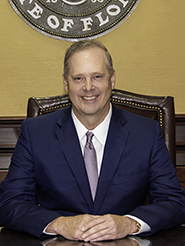
The 2022 elections for the Florida State Senate took place on Tuesday, November 8, 2022, to elect state senators from all 40 districts. Although on ordinary years, 20 senators are elected at a time on a staggered basis, races following redistricting elect all 40 members to ensure that each member represents an equal number of constituents. The Republican Party expanded their Senate majority from 24 to 28, gaining a supermajority in the Senate. The concurrently held House elections also resulted in a supermajority, giving Republicans supermajority control of the legislature.

